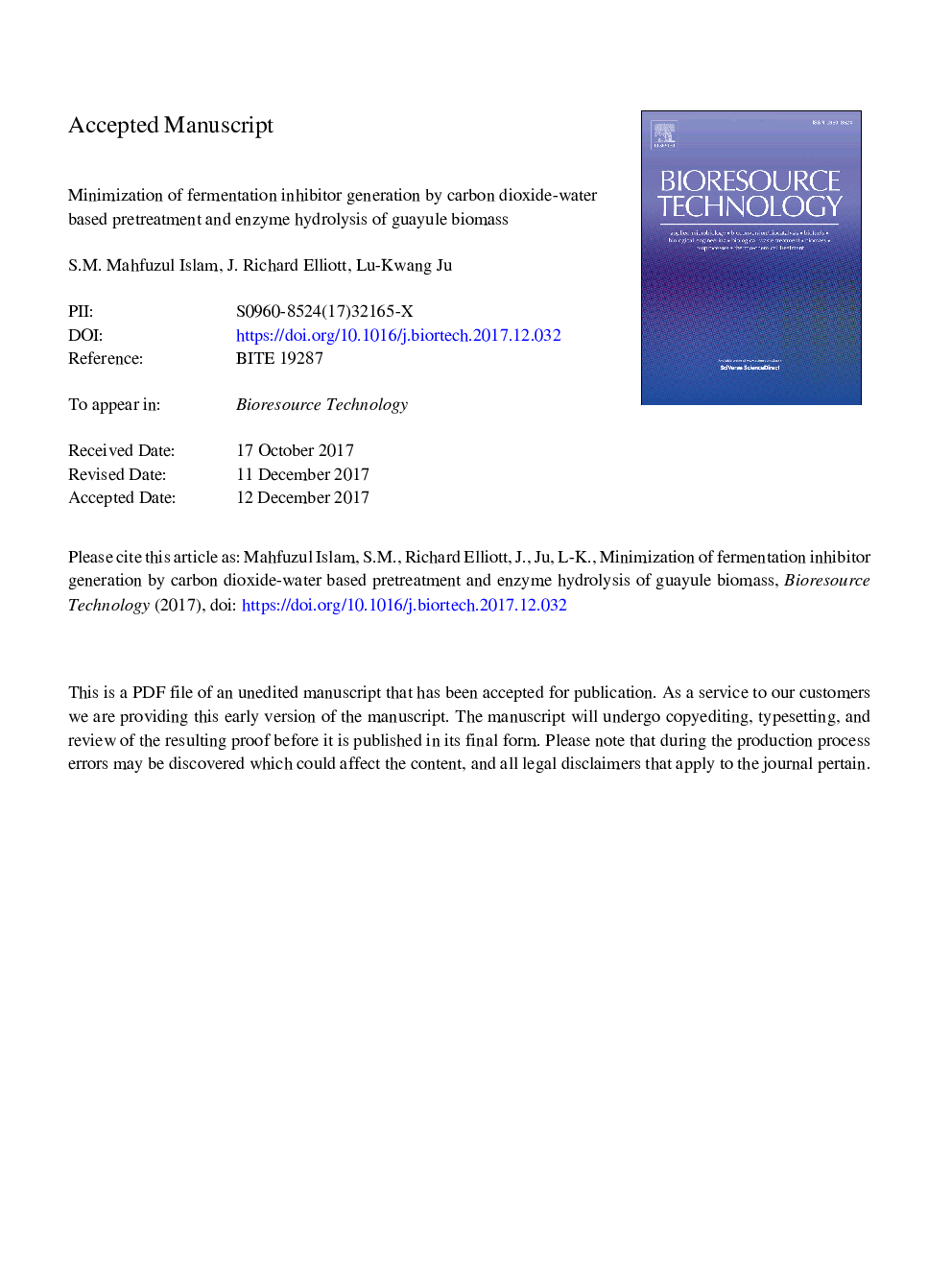| Article ID | Journal | Published Year | Pages | File Type |
|---|---|---|---|---|
| 7068572 | Bioresource Technology | 2018 | 36 Pages |
Abstract
Guayule rubber production leaves >80% biomass as ground bagasse, which can be hydrolyzed to release sugars but also fermentation inhibitors. Here inhibitor generation and sugar conversion by the CO2-H2O pretreatment and enzyme hydrolysis were studied. Different pretreatment conditions: 550-4900â¯psi, 160-195â¯Â°C, 10-60â¯min and fixed 66.7% water, generated widely varying amounts of inhibitors (per dry-bagasse mass): 0.014-0.252% hydroxymethylfurfural, 0.012-0.794% furfural and 0.17-8.02% acetic acid. The condition (195â¯Â°C/3400â¯psi/30â¯min) giving highest reducing sugar (86.9â¯Â±â¯1.5%) and cellulose (99.2â¯Â±â¯1.3%) conversions generated more inhibitors. Kluyveromyces marxianus fermentation showed complete growth and ethanol production inhibition at â¥14â¯g/L combined inhibitors. Considering both sugars and inhibitors, the optimum condition was 180â¯Â°C, 1800â¯psi and 30â¯min, enabling 82.8â¯Â±â¯2.8% reducing sugar, 74.8â¯Â±â¯4.8% cellulose and 88.5â¯Â±â¯6.9% hemicellulose conversions with low levels of hydroxymethylfurfural (0.07%), furfural (0.25%) and acetic acid (3.0%). The optimized CO2-H2O pretreatment gave much lower inhibitor formation and higher sugar conversion than other pretreatment methods.
Related Topics
Physical Sciences and Engineering
Chemical Engineering
Process Chemistry and Technology
Authors
S.M. Mahfuzul Islam, J. Richard Elliott, Lu-Kwang Ju,
